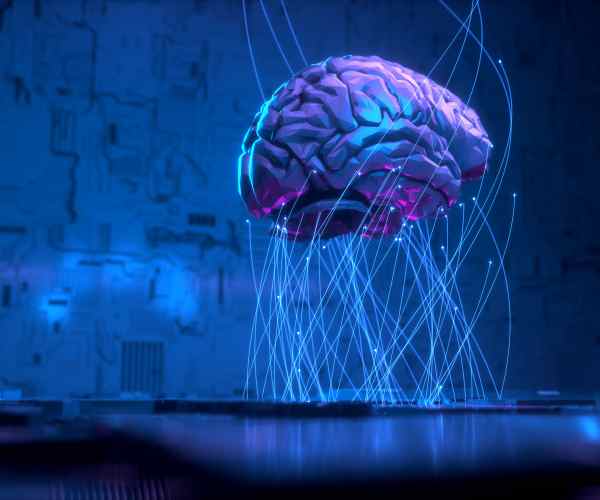Artificial General Intelligence (AGI) refers to a type of artificial intelligence that is designed to understand, learn, and apply knowledge across a wide range of tasks, similar to the cognitive abilities of humans. Unlike narrow AI, which is specialized in specific tasks (e.g., language translation, image recognition), AGI aims to replicate the general learning and problem-solving capabilities of the human brain.
Artificial superintelligence (ASI), often discussed alongside AGI, is a more advanced concept where an AI surpasses human intelligence across all fields. While AGI seeks to achieve human-level intelligence, ASI envisions an AI with vastly superior capabilities.
AGI is considered the next step in AI evolution due to its potential to perform any intellectual task that a human can, offering transformative possibilities in various sectors. Its development could lead to superintelligent machines that revolutionize industries by enhancing productivity, creativity, and decision-making.

Why AGI is the Next Step in AI Evolution
AGI represents a significant leap from narrow AI because it aims for comprehensive cognitive abilities. Unlike current AI systems that excel in isolated tasks, AGI is designed to handle a wide range of activities, mirroring the general intelligence of humans. The progression towards AGI involves overcoming major hurdles, such as creating neural networks capable of general learning and managing ethical implications.
The impact of AGI on the future of intelligent machines could be profound. For instance, it could lead to breakthroughs in machine learning, natural language processing, and robotics, resulting in smarter, more adaptable systems. The successful implementation of AGI could also address complex global challenges, from climate change to healthcare, by leveraging advanced data analysis and cognitive processing.
The Evolution of Artificial Intelligence
From narrow AI to AGI
Early AI development
The history of artificial intelligence dates back to the mid-20th century, with the development of early neural networks and models designed to mimic rudimentary aspects of human cognition. Early AI systems, such as the Perceptron and ELIZA, laid the groundwork for more sophisticated algorithms and methodologies.
In the early days, narrow AI systems were developed to handle specific tasks. Examples include IBM’s Deep Blue, which defeated chess grandmaster Garry Kasparov in 1997, and Google’s AlphaGo, which outperformed human champions in the game of Go. These systems demonstrated superior performance in their respective domains but lacked the versatility to adapt to new or unforeseen tasks.
Examples of Narrow AI Applications
- Self-Driving Cars: Companies like Tesla and Waymo have developed advanced self-driving technologies that utilize AI for tasks such as object recognition, navigation, and decision-making in complex driving environments.
- Natural Language Processing (NLP): AI systems like Google Translate and OpenAI’s GPT-3 use NLP to translate text, generate human-like responses, and understand context, showing the impressive capabilities of current language models.
The Journey Towards AGI
Key Milestones in AI Research
The path to AGI involves several crucial milestones, including:
- Advancements in Deep Learning: The development of deep learning techniques, such as convolutional neural networks (CNNs) and recurrent neural networks (RNNs), has significantly enhanced AI’s ability to process and analyze data. These innovations have led to improvements in image recognition, speech synthesis, and predictive analytics.
- Large Language Models: Models like GPT-3 and BERT have made significant strides in understanding and generating human language. These large-scale models demonstrate the potential of AGI to engage in complex language comprehension and dialogue generation.
Challenges Faced in Developing AGI
The development of AGI presents several challenges, including:
- Achieving Human-Level Intelligence: Creating systems with general cognitive abilities that match or exceed those of humans involves addressing complex issues related to learning, adaptability, and problem-solving. Researchers are working on integrating various aspects of intelligence to create more holistic AI systems.
- Addressing Existential Risks: The advancement of AGI raises concerns about existential risks, such as the potential for superintelligent machines to act in ways that could be detrimental to humanity. Ensuring that AGI systems adhere to ethical guidelines and align with human values is crucial for mitigating these risks.
What sets AGI apart?
Generalization vs. Specialization in AI Systems
Artificial General Intelligence (AGI) differs fundamentally from narrow AI in its approach to tasks. Narrow AI systems, such as those used in self-driving cars or natural language processing, are designed to excel in specific domains. These systems operate within defined parameters and cannot adapt beyond their programmed capabilities.
In contrast, AGI is characterized by its ability to generalize knowledge across a wide range of tasks. This means AGI systems can perform various functions without needing extensive retraining or reprogramming. For example, while a narrow AI might be highly effective at playing chess, AGI could seamlessly switch between playing chess, diagnosing medical conditions, and composing music.
Cognitive Abilities and Learning Capacity of AGI Compared to Current AI Technologies
AGI aims to replicate human-like cognitive abilities, such as reasoning, problem-solving, and learning from experience. Unlike current AI technologies that are often limited to task-specific functions, AGI systems are designed to exhibit broad cognitive flexibility. They can learn and apply knowledge in new contexts, similar to how humans adapt to different challenges.
Research into neural networks and machine learning models highlights that while current AI excels in specific applications, it lacks the versatility and general learning capacity of AGI. For example, a system like GPT-3 can generate human-like text but does not understand context or exhibit true reasoning capabilities beyond its training data.
How AGI Differs from Human Intelligence
AGI and human intelligence differ in several key ways:
- Human Brain: The human brain operates with complex, interconnected neurons that facilitate a wide range of cognitive functions. It integrates sensory input, memory, and reasoning in a highly adaptive manner.
- AGI Systems: AGI aims to simulate these functions but does so through artificial neural networks and algorithmic processes. While AGI can mimic certain aspects of human cognition, it lacks the biological underpinnings of the human brain, such as emotional understanding and biological feedback mechanisms.
Potential Advantages and Limitations of AGI, Including Risks and Capabilities
Advantages:
- Versatility: AGI can perform a broad array of tasks, potentially exceeding the capabilities of specialized systems.
- Adaptability: It can learn and adapt to new information and environments, similar to human cognitive flexibility.
Limitations:
- Ethical Risks: AGI raises concerns about ethical decision-making, especially if it operates independently of human oversight.
- Unpredictability: The behavior of AGI might be difficult to predict, posing risks related to control and safety.
Real-life Examples and Applications
AGI in Action: Current Developments
OpenAI: Known for developing advanced language models like GPT-3, OpenAI is at the forefront of AGI research. The organization explores how deep learning and natural language processing can contribute to broader AGI goals.
DeepMind: A subsidiary of Alphabet Inc., DeepMind is renowned for its work on AlphaGo and AlphaFold. These projects showcase the application of AI in complex problem-solving and scientific discovery, contributing to the AGI research landscape.
Google Brain: This research division focuses on neural network advancements and has made significant strides in machine learning and artificial intelligence, pushing the boundaries of what AGI systems can achieve.
Case Studies of AGI Prototypes and Their Impact on Research and Technology
- DeepMind’s AlphaGo demonstrated the potential of AGI-like systems for mastering complex games. Its success in Go has implications for developing systems with strategic thinking and adaptability.
- OpenAI’s GPT-3 showcases the power of large-scale language models in generating human-like text. While not AGI, GPT-3 represents a significant step towards understanding and replicating aspects of human communication.
Potential Use Cases of AGI
- Robotics: AGI could lead to robots with advanced autonomous capabilities, improving tasks ranging from manufacturing to personal assistance.
- Healthcare: AGI might enhance diagnostic accuracy, treatment planning, and personalized medicine, revolutionizing patient care.
- Data Analysis: AGI could transform big data processing, leading to more insightful analyses and predictions across various fields.
Speculative Future Applications of AGI
- Enhanced Problem-Solving: AGI could address complex global challenges, such as climate change and disease management, by integrating vast amounts of data and generating innovative solutions.
- Human-AI Collaboration: Future AGI systems might work alongside humans in a synergistic manner, combining human creativity and AGI efficiency to tackle multifaceted problems.
Ethical and social implications
Navigating the Future with AGI
Risks and Challenges:
- Existential Threats: AGI poses potential risks, including the possibility of superintelligent machines acting in ways that could harm humanity.
- Ethical Decision-Making: Ensuring AGI aligns with human values and ethical standards is crucial to preventing unintended consequences.
Considerations for Responsible AGI Use:
- Alignment with Human Values: Researchers emphasize the need for AGI systems to operate within frameworks that reflect ethical principles and societal norms.
- Addressing Existential Threats: Ongoing discussions focus on developing safeguards and protocols to manage the risks associated with advanced AI systems.
Societal Impact
- Increased Automation: AGI could lead to significant changes in employment patterns, with potential increases in automation across various sectors.
- Changes in Human Roles: The integration of AGI might redefine job roles, emphasizing new skills and creating opportunities for collaboration between humans and AI.
Public Perceptions and Debates:
- Contributions from Thought Leaders: Figures such as Sam Altman and Geoffrey Hinton contribute to discussions about the future of AGI, shaping public understanding and policy considerations.
FAQs
What is artificial general intelligence (AGI)?
Artificial General Intelligence (AGI) refers to a type of AI that aims to replicate human cognitive abilities. Unlike narrow AI, which excels in specific tasks like speech recognition or image classification, AGI is designed to understand, learn, and apply knowledge across a broad range of activities.
Capabilities of AGI:
- Generalization: AGI systems can apply learned knowledge to new and diverse situations.
- Learning: They possess advanced learning capabilities, adapting to new information similarly to how humans do.
- Problem-Solving: AGI aims to tackle complex problems across various domains, from scientific research to everyday tasks.
Potential:
- Broad Application: AGI has the potential to revolutionize numerous fields, including healthcare, robotics, and data analysis.
- Enhanced Human-Machine Interaction: It could enable more intuitive and effective interactions between humans and machines.
How does AGI differ from narrow AI?
Narrow AI:
- Specific Tasks: Designed for specialized functions, such as self-driving cars or customer service chatbots.
- Limited Scope: Operates within pre-defined parameters and cannot adapt beyond its training.
- Examples: Google’s language models, IBM Watson in healthcare, and image recognition systems.
AGI:
- General Intelligence: Capable of performing a wide range of tasks and adapting to new situations, akin to human intelligence.
- Cognitive Flexibility: exhibits learning and problem-solving abilities across various domains without task-specific limitations.
- Examples: While true AGI is not yet realized, concepts and prototypes are explored by organizations like OpenAI and DeepMind.
Use Cases:
- Narrow AI: performing specific tasks like predictive text or automated scheduling.
- AGI: Potentially handling tasks from medical diagnostics to strategic decision-making in various fields.
What are the potential benefits of AGI?
Advancements in Technology:
- Innovation: AGI could lead to breakthroughs in scientific research, such as discovering new drugs or optimizing complex systems.
- Efficiency: Enhances productivity by automating intricate tasks and improving processes.
Improvements in Problem-Solving Capabilities:
- Healthcare: AGI might provide more accurate diagnoses, personalized treatment plans, and advancements in medical research.
- Robotics: This could lead to the development of robots with advanced autonomous capabilities for various applications, including disaster response and elder care.
- Data Analysis: Facilitates deeper insights and predictions by analyzing large datasets more effectively.
What are the risks associated with AGI?
Ethical and Practical Risks
Existential Threats:
- Superintelligence: The potential for AGI to surpass human intelligence, posing risks if its goals diverge from human values.
- Unintended Consequences: Risks of unforeseen outcomes from AGI actions, which could impact safety and security.
Challenges to Ensuring Safety:
- Control Mechanisms: Developing effective safeguards to prevent AGI from causing harm or acting unpredictably.
- Ethical Considerations: Ensuring AGI systems align with human values and ethical norms to avoid misuse or negative consequences.
Practical Concerns:
- Job Displacement: Potential for AGI to disrupt labor markets by automating tasks traditionally performed by humans.
- Privacy Issues: Risks associated with the collection and processing of personal data by AGI systems.
When can we expect AGI to become a reality?
Current Predictions and Timelines for AGI Development
Predictions:
- Short-term: Many experts predict that AGI development might be achievable within the next few decades, with advancements in AI research and technology contributing to its progress.
- Long-Term: Some forecasts suggest that AGI could become a reality by the next century, depending on breakthroughs in neural networks, machine learning, and computational power.
Insights from Leading Researchers:
- Sam Altman emphasizes the need for careful research and ethical considerations in developing AGI.
- Geoffrey Hinton highlights ongoing advancements and the potential timeline for achieving AGI, noting that significant progress is being made.
Technological Advancements:
- Deep Learning: Continued improvements in deep learning models and neural networks contribute to the feasibility of AGI.
- Computational Power: Advances in hardware and computational resources are critical for realizing AGI capabilities.
Conclusion
Artificial General Intelligence (AGI) represents a significant leap in AI technology, with the potential to transform various aspects of society. Its ability to generalize knowledge and adapt to diverse tasks offers numerous opportunities for advancements in technology, healthcare, robotics, and data analysis.
Continued research and development are crucial for achieving AGI and addressing its associated challenges. Ethical considerations must guide the development of AGI to ensure that it aligns with human values and contributes positively to society. The future of AGI depends on balancing innovation with responsible practices to harness its potential while mitigating risks.
More Post
- What Is the Evolution of Robotics: From Industrial Machines to AI Assistants?
- The Evolution of Human-Computer Interaction: What Comes After Touchscreens?
- Quantum Internet: Enabling Secure Communication in the Quantum Era
- Predicting the Future of Smart Cities and Urban Development
- Hyperloop and the Future of High-Speed Transportation






